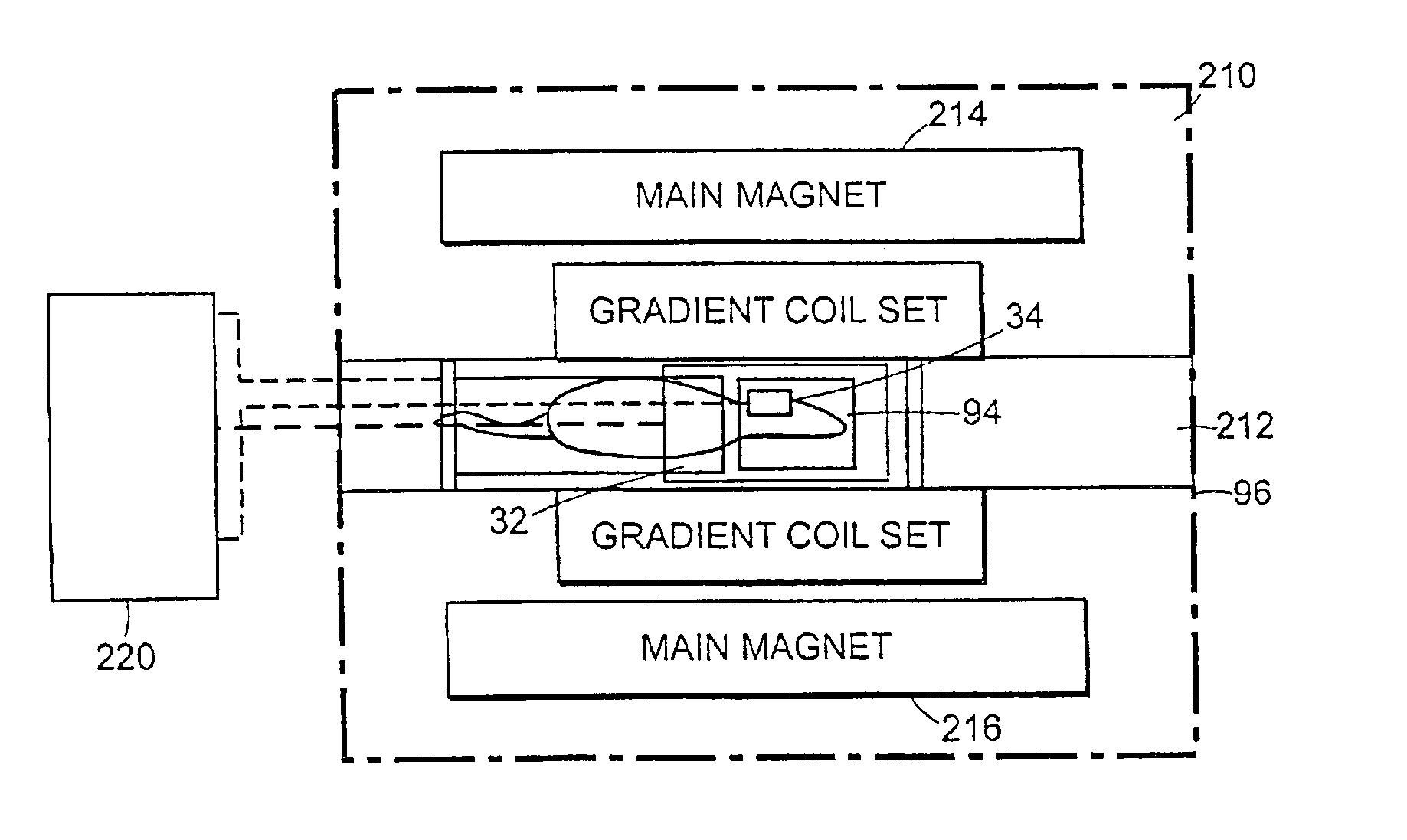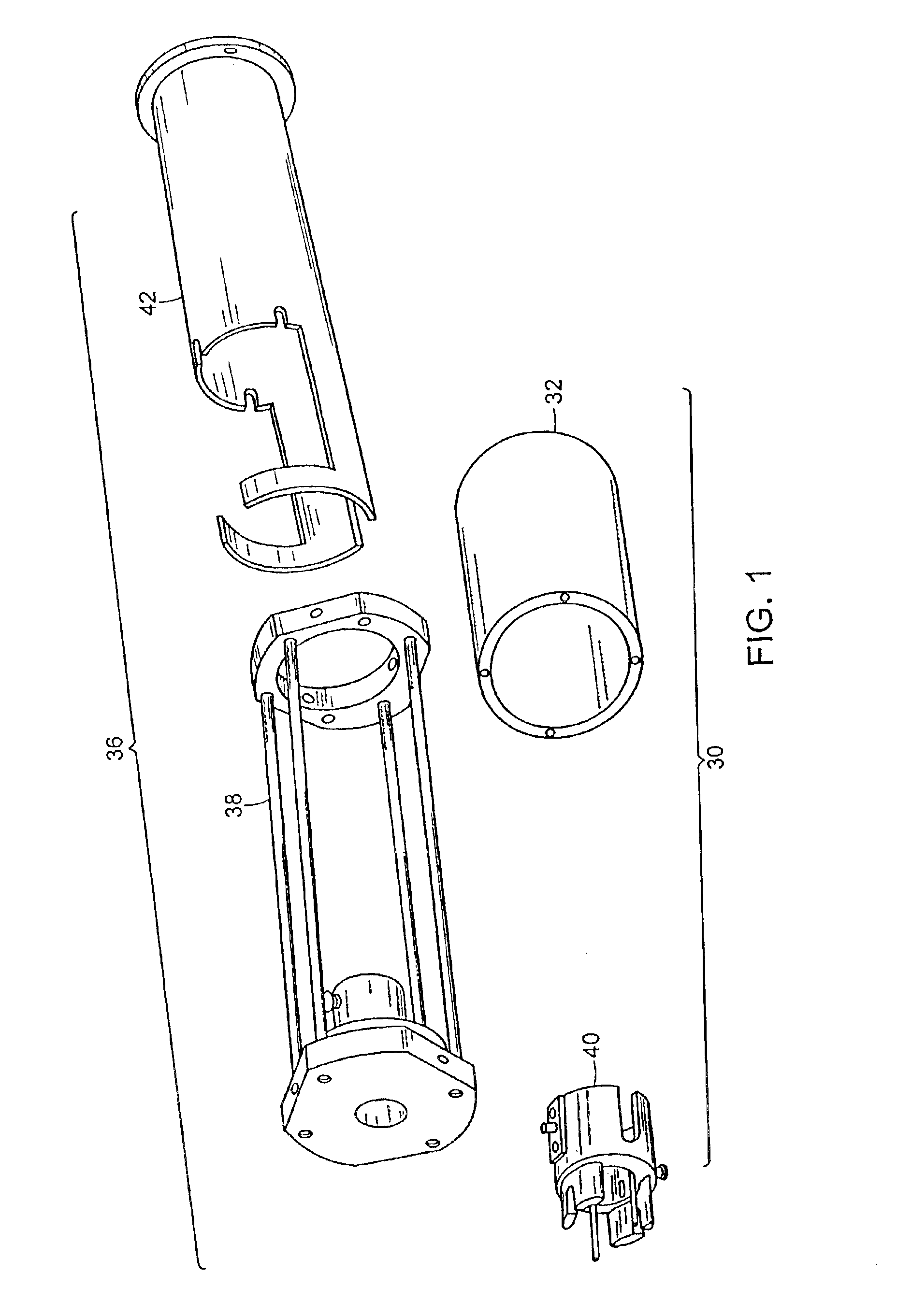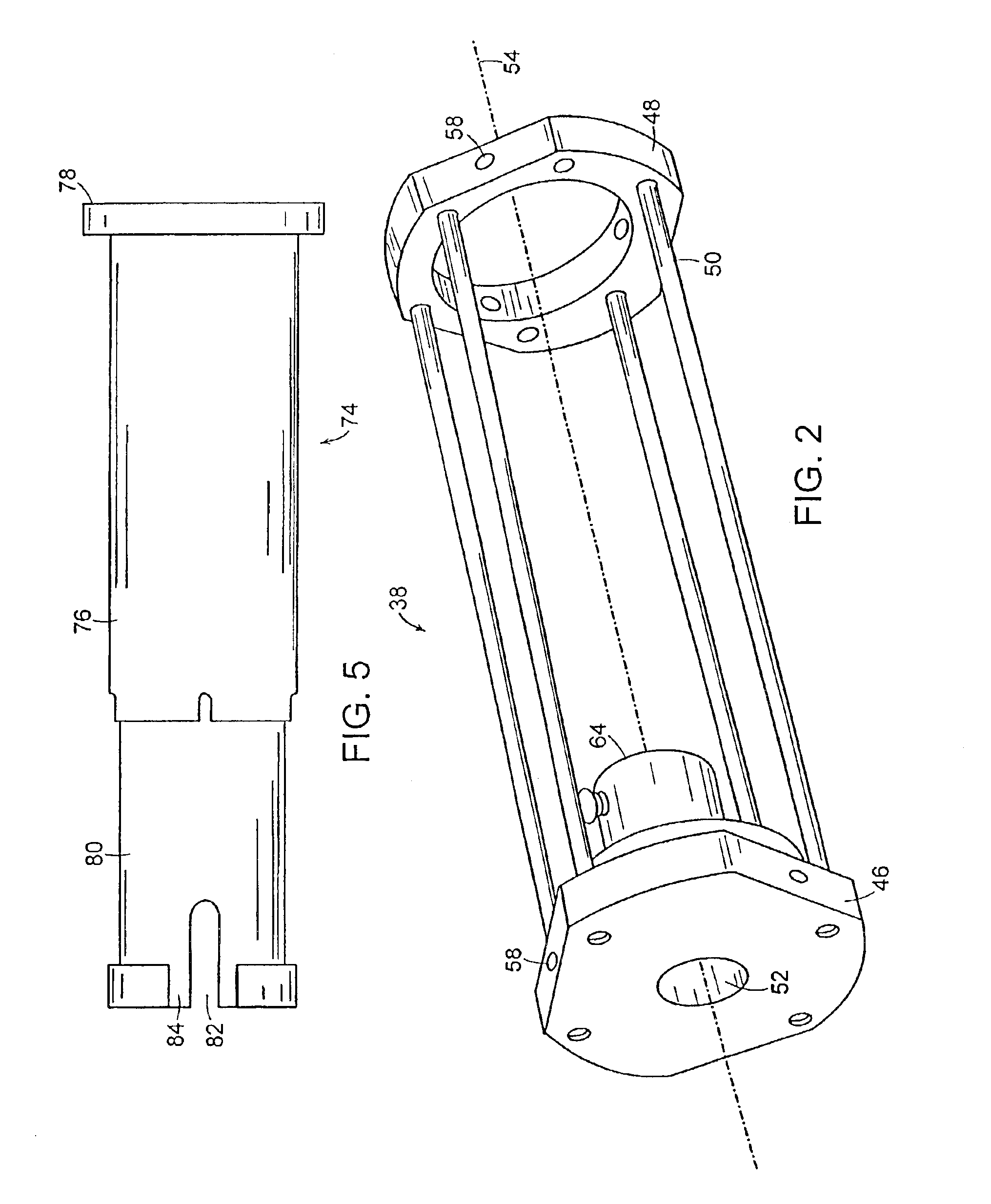Method and apparatus for performing neuroimaging
a functional magneti resonance imaging and neuroimaging technology, applied in the field of magnetic resonance imaging, can solve the problems of affecting the application of fmri to the more physiologically relevant functions, impede the use of this technology in conscious animals, and most studies to date have been limited, so as to enhance mr signal mapping and eliminate movement artifacts
- Summary
- Abstract
- Description
- Claims
- Application Information
AI Technical Summary
Benefits of technology
Problems solved by technology
Method used
Image
Examples
Embodiment Construction
In the figures, like numbers are used to indicate like elements. FIG. 1 shows a multi-cylindrical, dual-coil animal restrainer 30 according to the invention. The multi-cylindrical, dual-coil animal restrainer 30 including a volume coil 32 and a surface coil 34, as seen in FIG. 8A, and the method described allow the functional magnetic resonance imaging (fMRI) of conscious animals.
Referring to FIG. 1, the multi-cylindrical, dual-coil animal restrainer 30 has the volume coil 32, which will be described further below in greater detail, and a restraining assembly 36. The restraining assembly 36 includes a support frame or chassis 38, a head retainer 40, and a body retainer 42.
The frame 38 is shown in perspective in FIG. 2. The frame 38 has a first or front-end mounting plate 46 and a second or rear-end mounting plate 48 spaced apart by a plurality of support members or rods 50. The front-end mounting plate 46 has a hole 52 which is collinear with a longitudinal axis 54 of the frame 38. ...
PUM
 Login to View More
Login to View More Abstract
Description
Claims
Application Information
 Login to View More
Login to View More - R&D
- Intellectual Property
- Life Sciences
- Materials
- Tech Scout
- Unparalleled Data Quality
- Higher Quality Content
- 60% Fewer Hallucinations
Browse by: Latest US Patents, China's latest patents, Technical Efficacy Thesaurus, Application Domain, Technology Topic, Popular Technical Reports.
© 2025 PatSnap. All rights reserved.Legal|Privacy policy|Modern Slavery Act Transparency Statement|Sitemap|About US| Contact US: help@patsnap.com



